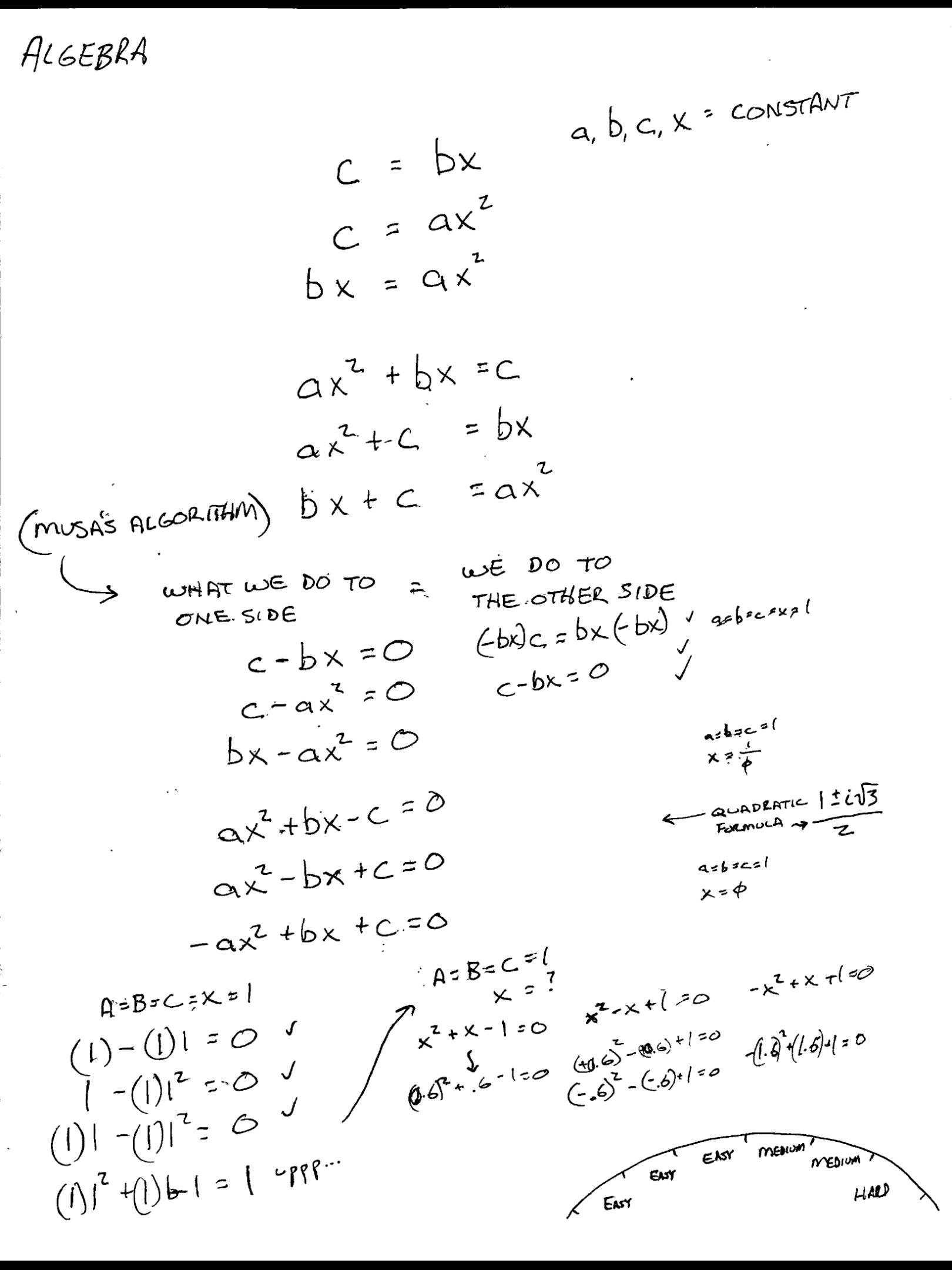
ALGEBRA
In 830 AD a mathematician named Musa Al-Khwarizmi of Persia wrote a book called the Compendious Book on Calculation and Balancing. In the book, he described six relationships between variables and constants that COULD be true. This was the first description of the process of algebra:
Musa said, a constant c COULD be equal to another constant b times a variable x. “C=bx”
Then, a constant c COULD be equal to another constant a times the same variable x times itself. “C=ax^2”
Then, a constant b times a variable x COULD be equal to another number times the same variable times itself. “Bx=ax^2”
When Musa came up with these relationships, he had no numbers, nor operations. He wrote out descriptions of these terms in Arabic, in written language. Musa also helped create the numeral system we have today called Hindu-Arabic numerals. Adding on to earlier works by Brahmagupta of India.
When single terms or monomials combine or separate from other monomials they form binomials. The next set of terms combine all three terms and form trinomial expressions, where:
A number (a) times a variable (x) squared plus another number (b) times a variable (x) COULD be equal to a constant (c)
A number (a) times a variable (x) squared plus a constant (c) COULD equal a number times a variable (x)
A number (b) times a variable (x) plus a constant (c) COULD equal another number (a) times a variable (x) squared
These are trinomial expressions. If there are any additional terms in an equation they are called polynomials.
SOLVING EQUATIONS
Along with these six relationships, Musa devised an algorithm to solve algebraic equations. The general algorithm is, any operation we do to one side, we do to the other. Here we can subtract one term from both sides. It would look like this:
c = bx c-bx=0
c = ax^2 c-ax^2=0
bx = ax^2 bx-ax^2=0
ax2 + bx = c ax^2+bx-c=0
ax2 + c = bx ax^2-bx+c=0
bx + c = ax2 -ax^2+bx+c=0
A=B=C=X=1
So we identified comparisons that COULD be true. How do we find values that DO make the comparison true? Let’s see what happens if we enter 1 for each unknown. So A=B=C=X=1…
1-1(1)=0 check
1-1(1^2)=0 check
1(1)-1(1^2)=0 check
Okay, so ONE works as a solution for binomial expressions. What about squared functions…
1(1^2)+1(1)-1=0 uuup…
A=B=C=1
Once we substitute one for the squared functions, our equation is no longer true. How about we say, A=B=C=1, and try to find an X value where the equation would be true:
x^2+x-1=0 x^2-x+1=0 -x^2+x+1=0
There are only two numbers which makes this equation true: Phi and 1/phi. Or approximately 1.6 and 0.6.
Several times throughout history the quadratic equation has been solved. Brahmagupta of India in his book Satapatha, Lui Hui of China Nine Chapters of Math Art Euclid of Greece The Elements, and more recently Simon Stevin of Belgium Arithmetic in 1594.